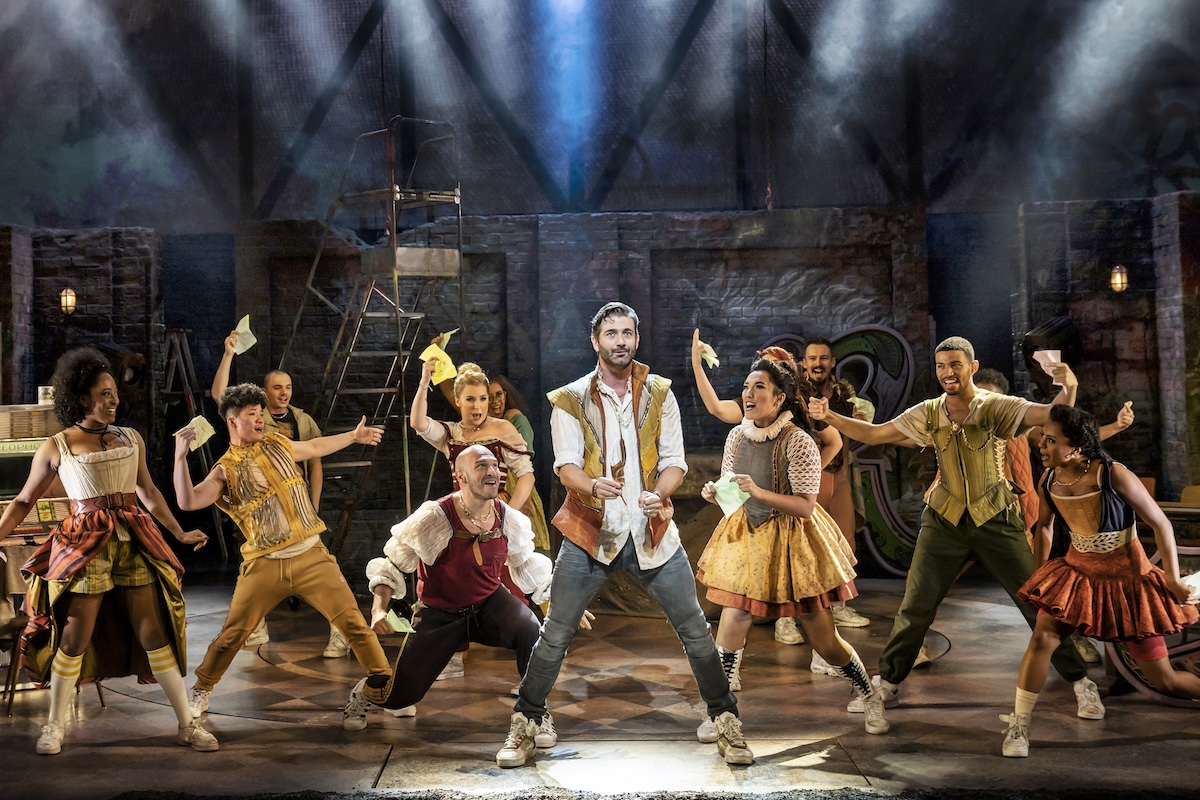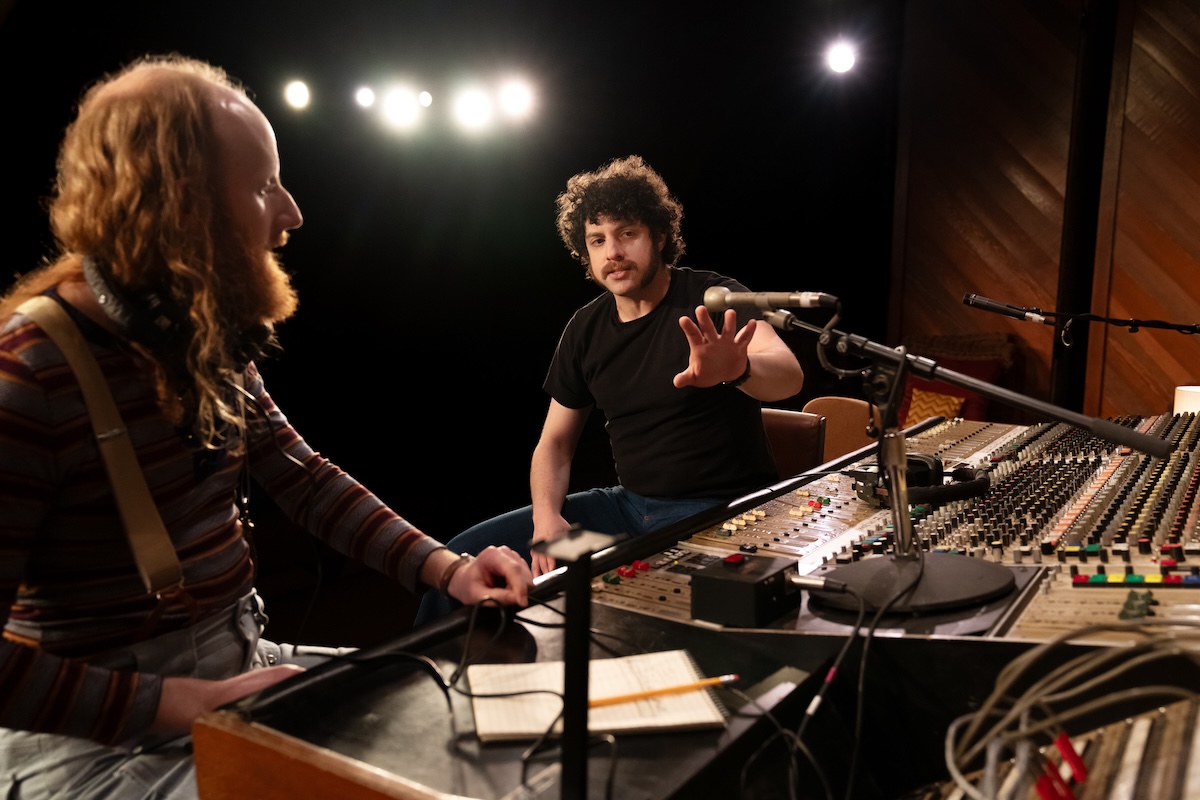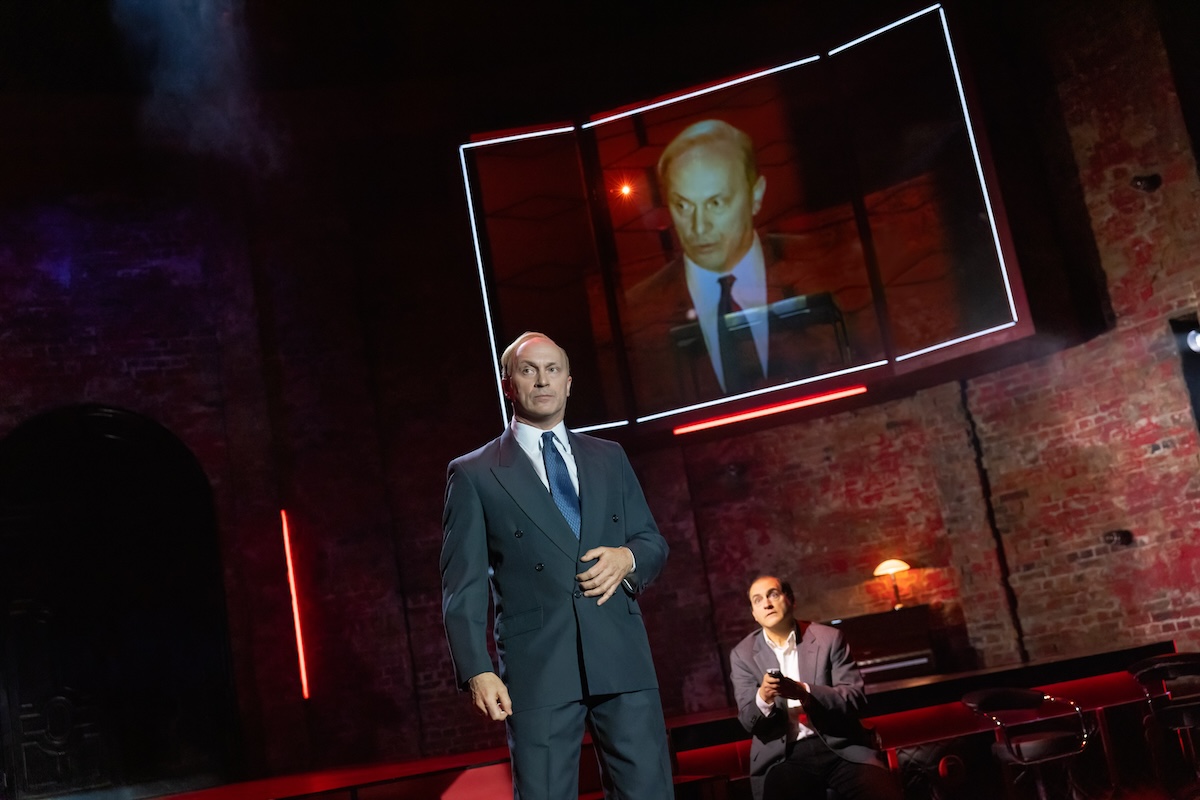Shakespeare Made Earthy and Raw in The Tragedy of Julius Caesar
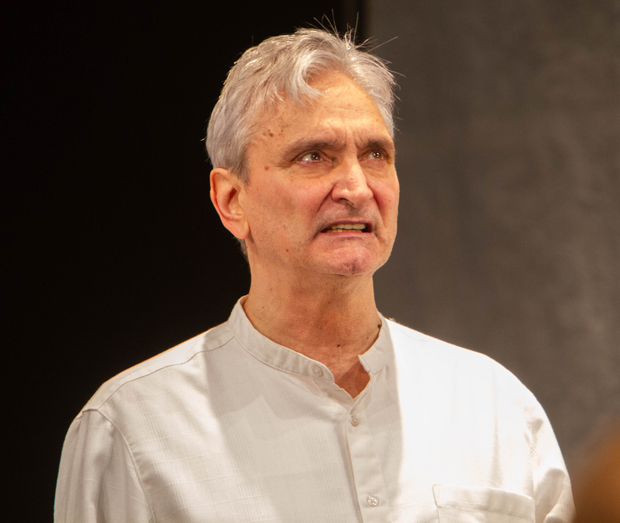
(© Henry Grossman)
In his last high-profile appearance in the New York theater landscape, Julius Caesar resembled a certain modern-day politician surrounded by characters and scenery meant to evoke the here and now. That Oskar Eustis-directed 2017 Shakespeare in the Park production of William Shakespeare's historical tragedy caused controversy for its blunt topicality, not to mention its bloody murder scene. Forgoing such provocative details in favor of a relatively minimalist aesthetic, director Shana Cooper's new production of The Tragedy of Julius Caesar at Theatre for a New Audience is unlikely to cause a similar stir. Still, Cooper's urgent and worthy interpretation reminds one of just how much this Shakespeare play in particular gains from a fairly straightforward approach — straightforward, that is, except for its bruising physicality.
Nothing about the plot has changed: It still centers around the eponymous power-hungry military commander who is killed midway through by a group of conspirators, but whose death leads to a civil war that tears the fabric of Roman society apart. But this Julius Caesar is one of the rawest you're likely to see: Characters fight furiously to stay alive; Roman plebeians prance shirtless around the stage while wearing masks; and copious amounts of blood are spilled. Sibyl Wickersheimer's set design is just as elemental, beginning with little more than two white walls with large cracks in them, and gradually breaking apart to reveal the full chaotic mess backstage behind them — a primal evocation of a society on the brink of collapse. And costume designer Raquel Barreto sharply delineates between commoners in tribal attire and royalty in cleaner clothes until, in the production's second half, everyone in the cast is dressed in grimy army apparel as all of Rome is brought down into the muck of violent internal conflict.
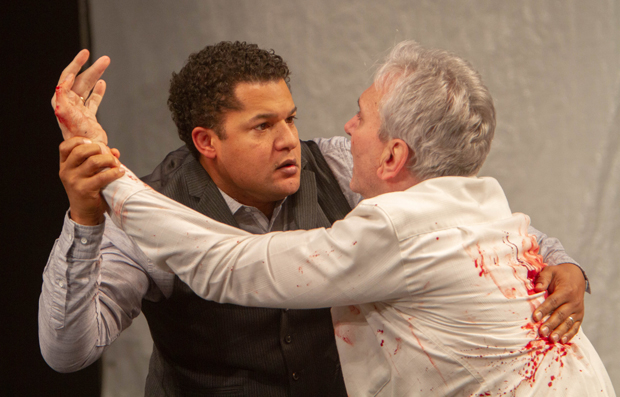
(© Henry Grossman)
Cooper, while aiming for universality, does include some suggestively up-to-date details. In a gesture toward gender-blind casting, the Soothsayer, Cicero, and Artemidorous — supporting characters who issue warnings to the major players — are all portrayed by women (Michelle Hurst, Emily Dorsch, and Juliana Sass, respectively), while Mark Antony's comrades-in-arms Octavius (Benjamin Bonenfant) and Lepidus (Liam Craig) are styled in Che Guevara-like gear. That last bit of costuming may be the production's most heavy-handed touch, but it is completely of a piece with Cooper's broader vision suggesting the ways in which the kind of ruthless political maneuvering Shakespeare so pitilessly chronicled has continued unabated throughout history. The fact that Cooper manages to imply topical parallels without overwhelming the play's enduring power feels refreshing in a time when many new shows shout their "relevance" to the skies at the expense of art.
It also allows us to focus on the performances of the excellent 18-member cast, and thus on the human elements underlying Shakespeare's epic sociopolitical dissection. Cooper clearly sees Brutus, the conflicted friend of Caesar who turns on the power-hungry ruler for what he believes is the good of Roman society, as the play's real protagonist. Rocco Sisto plays Caesar in an unusually reserved manner, thus allowing Brandon J. Dirden as Brutus to seize the spotlight with an emotionally transparent performance that invites us to read his every thought as he carefully considers an act of betrayal that cohorts like Cassius (a charismatically sweet-talking Matthew Amendt) and Caska (a swaggering Stephen Michael Spencer) sees with less nobility of intent. And yet, one can't entirely escape the lure of a seductive authoritarian, and in Mark Antony's big speech — in which he turns the Romans against Brutus, Cassius, and the rest of the conspirators in Caesar's death — Jordan Barbour briefly steals the show with a thunderous rendition that has the power to chill.

(© Henry Grossman)
Cooper's directorial inspiration does flag a bit during the second half (there's only so much even she can do to liven up the long argument between Brutus and Cassius over an officer's acceptance of bribes), and Erika Chong Shuch's choreography is so impressively aestheticized that it comes close to spoiling the production's grit. Yet even the choreography has its own logic in this intelligent production, with the anarchic movements of the plebeians in the first half giving way to the terrifying lockstep routines of the second half. It's fitting that Cooper leaves us with the image of the whole cast still marching and fighting in place, even after many of the major characters have died. As surely Shakespeare himself knew, and as Cooper's production evokes with raging immediacy and bleak poetry, history marches on, as does human folly.

(© Gerry Goodstein)





